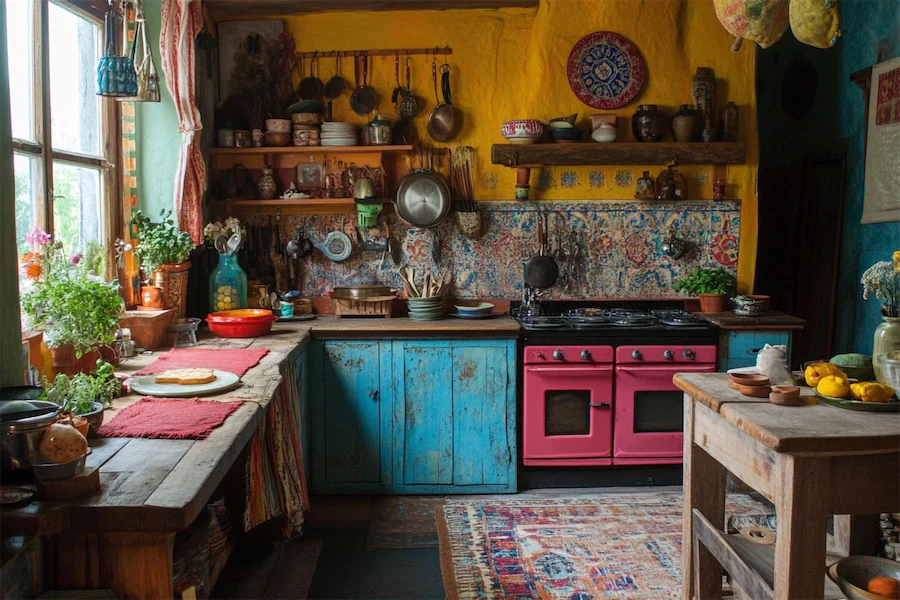A Bohemian, or Boho, kitchen embodies a free-spirited and eclectic aesthetic, blending diverse colors, textures, and cultural influences to create a space rich in personality and warmth. This article explores the history, key features, applications, and considerations when designing a Bohemian kitchen.
Introduction to Bohemian Kitchens
Bohemian kitchens are characterized by their relaxed and unconventional style, often incorporating a mix of vintage and modern elements, vibrant patterns, and an abundance of greenery. This design approach encourages personal expression, resulting in spaces that are uniquely tailored to individual tastes and experiences.
History and Origins of Bohemian Kitchens
The Bohemian aesthetic originated from the unconventional lifestyles of artists, writers, and travelers in 19th-century Europe, particularly in regions like Central-Eastern Europe. This style emphasizes creativity, individuality, and a disregard for traditional design norms, leading to interiors that are rich in cultural influences and personal artifacts.
Key Features of Bohemian Kitchens
Bohemian kitchens are distinguished by several hallmark features:
- Eclectic Mix of Materials and Patterns: Combining various textures such as beadboard, rattan, and woven decor, along with colorful elements like vibrant tiles and patterned textiles, to create a layered and dynamic space.
- Abundance of Greenery: Incorporating plants and greenery to bring life and a natural element into the kitchen, enhancing the organic and relaxed atmosphere.
- Vintage and Retro Elements: Utilizing vintage appliances, reclaimed wood, and antique accessories to add character and a sense of history to the space.
- Open Shelving with Personal Displays: Showcasing eclectic collections, travel souvenirs, and artisanal pieces on open shelves to reflect personal stories and global influences.
- Warm and Earthy Color Palettes: Employing a mix of warm tones, earthy hues, and vibrant accents to create an inviting and cozy environment.
Applications of Bohemian Kitchens
The versatility of Bohemian kitchen designs allows them to be adapted to various settings:
- Urban Apartments: Infusing a sense of individuality and warmth into city living spaces through eclectic decor and personalized touches.
- Country Homes: Enhancing the rustic charm with vintage elements, natural materials, and a relaxed layout that encourages gathering and creativity.
- Open-Concept Layouts: Creating seamless transitions between cooking and living areas by incorporating cohesive Bohemian design elements throughout the space.
Considerations When Choosing a Bohemian Kitchen
When planning a Bohemian kitchen, consider the following:
- Personal Expression: Embrace individuality by incorporating items that reflect your personal journey, travels, and experiences.
- Balance and Cohesion: While eclecticism is key, maintaining a harmonious balance of colors, patterns, and textures ensures the space feels cohesive rather than chaotic.
- Functionality: Ensure that the design elements enhance, rather than hinder, the practicality and functionality of the kitchen space.
Conclusion
Bohemian kitchens offer a unique blend of creativity, warmth, and individuality, resulting in spaces that are both functional and deeply personal. By understanding their history, key features, and applications, you can design a kitchen that reflects your free-spirited style and eclectic tastes.
